Myocardial infarction - what is a scar?
After myocardial infarction, the heart muscles are damaged by a destructive process. Oxygen starvation and stress on weakened connective tissue have an additional negative impact. As a result, a scar may begin to form on the heart.
With cardiosclerosis (from the Greek “cardia” - heart and “skleros” - hard), the connective tissue of the epicardial film grows and thickens and gradually turns into a scar. Scar is a type of connective tissue (some call it scar tissue) with a high content of collagen, a protein that gives the tissue strength.
A scar forms where tissue regenerates and recovers from damage. The scar may be replaced over time by ordinary tissue, or it may remain for life, turning into a scar.
Thus, cardiosclerosis is a scar on the heart.
Cardiosclerosis can be focal or diffuse. Diffuse cardiosclerosis (from the Latin diffusio - to spread, spread) is a uniform thickening of connective tissue over the entire area of the epicardium. May occur without scarring.
With focal (cicatricial) cardiosclerosis, the pathological proliferation of connective tissue is localized in focal zones, where scars form. Most often, cicatricial cardiosclerosis is a consequence of myocardial infarction – necrosis (death) of a section of the heart muscle.
Causes
Scarring of cardiac tissue is not an independent process. Cardiosclerosis is a consequence of diseases such as ischemia, myocarditis, cardiac dystrophy or atherosclerosis of the coronary arteries. Each disease has its own causes and manifestations.
Based on causative factors, there are three types of cardiosclerosis:
- Myocardial - scarring occurs in the area of the myocardium affected due to muscle dystrophy. The cause is often infection, allergy, rheumatic heart disease or age-related changes. May manifest as shortness of breath, pain in the chest, weakness, tachycardia and arrhythmia.
- Atherosclerotic - observed as a consequence of blockage of the coronary vessels. With this type of disease, the patient experiences symptoms of hypoxia, angina, ischemic heart disease and arrhythmia.
- Post-infarction - the scar appears after myocardial infarction. This type is considered the most dangerous, since the process progresses quickly and causes many associated abnormalities. May present with shortness of breath, arrhythmia, swelling of the legs, swollen veins and persistent chest pain.
When the heart muscle is damaged, the following factors associated with it have a negative impact:
- excessive physical activity;
- chronic deficiency of minerals and vitamins;
- lack of iron in the body;
- obesity, thyroid disease or diabetes;
- amyloidosis, alcoholism and intoxication.
When scars appear on the heart, the causes and treatment are interconnected. In order for therapy to be effective, it is necessary to identify the disease that caused the pathology.
Scarred heart is observed in patients as a secondary disease.
Cardiosclerosis is a disorder of the tissue structure of the heart. It occurs in two forms: small-focal cardiosclerosis and large-focal cardiosclerosis.
What is it? As many remember from school biology courses, our body consists of organs, and organs are made of tissues. Tissue is a system of homogeneous cells that perform a single function.
Each tissue in the body has its own purpose and takes its place in the “design” of organs.
Symptoms and diagnosis of cardiosclerosis of the heart
Cardiosclerosis is characterized as a progressive pathology in which normal muscle tissue in the myocardium is replaced by inelastic connective tissue. As a result of this process, the heart muscle loses its basic functions, that is, it stops conducting impulses and contracting.
Symptoms of cardiosclerosis depend not only on the form of the disease, but also on its location. By the way, heart valves are also susceptible to cardiosclerosis.
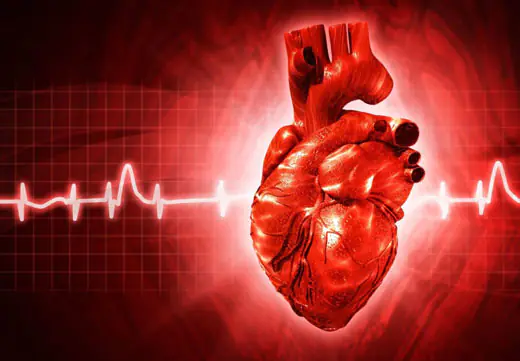
Cardiosclerosis of the heart occurs in people of all ages. The causes of this pathological process vary and depend on many factors, including age.
Replacement of normal heart tissue in children, as a rule, is the outcome of inflammatory (dystrophic) processes in the myocardium. In adults, the cause of cardiosclerosis lies in previous heart diseases, metabolic disorders, or, which is less common, as a result of changes occurring after inflammatory processes in the myocardium.
Symptoms and diagnosis of cardiosclerosis of the heart
When diagnosing, it is customary to use standard methods: electrocardiography, echocardiography, fluoroscopy. The best result is shown by coronary angiography - examination of the coronary vessels using a fluoroscope.
The heart is a muscle, which means it is completely transparent to X-rays. To study the coronary vessels, a dye is released into the blood, which allows the equipment to display a picture of the actual state of the heart muscle.
“X-ray dye” is injected with a catheter through the femoral artery, and after staining the coronary vessels with paint, the specialist has the opportunity to thoroughly examine the coronary system from any angle.
Treatment options
Scars on the heart are detected during an ECG or ultrasound examination of the heart. When diagnosing an abnormal condition of the heart muscles, a specialist prescribes a set of therapeutic measures aimed at treating the underlying disease and preventing an increase in the area of scar tissue.
It is impossible to restore the affected area, since the muscles completely atrophy, but with the correct treatment regimen, the symptoms of the pathological process can be eliminated and further deformation of the heart muscles can be prevented.
- taking medications;
- maintaining a healthy lifestyle.
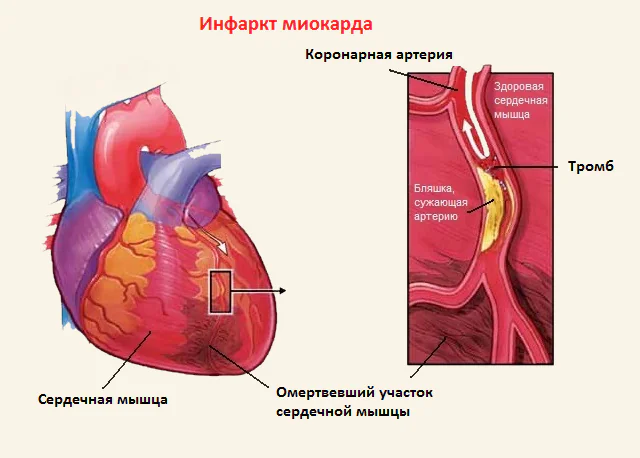
People suffering from the disease are advised to undergo an annual examination and periodic observation by a specialist to monitor the functioning of the heart.
Modern medical methods
When cardiac scars form, the patient is prescribed drugs that improve heart function, restore blood circulation and accelerate metabolic processes. Medicines are selected individually, depending on the existing clinical picture.
The main method of therapy is stem cell treatment. It is recommended that stem cells be used at the first sign of scarring after a heart attack.
This treatment is a method developed by modern medicine. The use of stem cells is aimed at the natural restoration of affected tissues and blood vessels.
The replacement process begins after the introduction of a cellular element (cardiomyoblast) into the body. As a result of treatment, great success can be achieved in restoring the contractile functions of the heart, thereby improving blood flow and the condition of the entire body.
Stem cell treatment allows, through natural processes, to achieve:
- strengthening vascular walls;
- dissolution of atherosclerotic plaques;
- preventing necrosis and tissue atrophy.
After some time, after cardiomyoblasts are injected into the patient, collateral vessels begin to develop in the heart, which increase the blood supply to the organ. Thus, all the consequences of a heart attack gradually disappear.
Nutritional Features
Proper nutrition is of great importance for successful therapy. The patient needs to limit himself in consuming animal fats and foods containing cholesterol. Nutrition should be aimed at replenishing the body with missing minerals and vitamins.
It is recommended to eat in moderation. If you are overweight, you should follow a weight loss diet to reduce the strain on your heart. Fresh vegetables, fish, meat, and dairy products should prevail in the diet of every person diagnosed with cardiosclerosis.
The transformation of dead muscle elements into connective tissue cells that occurs after a heart attack is non-negotiable. With appropriate support for the functioning of healthy cells, maximum cardiac efficiency can be achieved by reducing the load on the myocardium.
Today there are many drugs that reduce the heart's need for oxygen, fight tachycardia and improve metabolic processes.
Prevention of adverse consequences of cardiosclerosis includes:
- a special diet containing a minimum amount of cholesterol and fatty foods;
- if necessary, take drugs from the group of statins, which lower cholesterol levels in the body;
- moderate physical activity in order to avoid the spread of connective tissue formation;
- the use of cardioprotectors to reduce the load on the myocardium and protect the heart from further damage.
Depending on the nature of the complications, certain medications are prescribed:
- anticoagulants and antiplatelet agents (“Aspirin”) – prevent recurrent thrombus formation;
- cardioselective beta blockers (“Atenolol”) – reduce blood pressure in hypertension;
- metabolites (ATP) – activate metabolism, improve blood flow and the condition of coronary vessels;
- diuretics (“Furosemide”) are an effective addition to the treatment of heart failure.
The scar on the heart tends to spread for another 2-3 months. A patient who has experienced an attack must carefully monitor his condition throughout his life, and not just at the time of exacerbation of coronary insufficiency.
Cardiosclerosis therapy helps reduce the load on the circulatory system, reduce the myocardial oxygen demand and prevent possible complications.
Despite the lack of connective tissue's ability to transform back into muscle tissue, stem cell treatment is currently being actively studied in cardiology. The use of stem cells in the first week after myocardial infarction has been proven to be highly effective.
They not only replace the affected areas of the heart muscle, but are also able to restore the tone and elasticity of the coronary vessels.
Treatment of cardiosclerosis includes, firstly, curing the primary disease that caused scarring of the heart tissue. Of course, this point is applicable only in cases where the disease has not caused irreversible changes.
Secondly, the processes of connective tissue growth and scar formation are slowed down. For this purpose, ACE inhibitors (substances that lower blood pressure - Enap, Capoten), nitrates (nitrosorbide, cardiket, isomonate, monomac), disaggregants (acetylsalicylic acid), diuretics, drugs that stimulate metabolism (riboxin, panangin), b -adrenergic blockers (propranolol, metoprolol).
Treatment is carried out in a hospital setting and is usually conservative (without surgery). An exception is the formation of an aneurysm - thinning and swelling of the vessel wall. In this case, urgent surgical treatment is indicated to avoid internal hemorrhage.
Cardiosclerosis is a dangerous and serious disease, but with timely and competent treatment, the prognosis is usually positive. The main thing is not to start!
Disease prevention
Cardiosclerosis is classified as a group of cardiovascular diseases, therefore preventive methods are standard: adherence to dietary rules, regular therapeutic exercises, sanatorium treatment, etc.
Cardiosclerosis is considered a serious disease, but modern treatment methods can eliminate scars on the heart, and proper treatment provides a high chance of further recovery.
Fibrosis of heart tissue is a condition in which organ tissue is replaced by hardened connective fibers. The reasons for the formation of a scar on the heart are varied. Previous cardiac diseases, stress, and poor nutrition can trigger the development of a dangerous phenomenon, which later develops into disability.

What is a heart scar and its causes?
Scars on the heart, in medical terminology, are diagnosed as cardiosclerosis - a phenomenon that occurs as a result of dystrophic changes in the structure of connective tissue. Under the influence of unfavorable factors, atrophy of certain areas of tissue occurs. This condition provokes a deterioration in the normal functioning of a vital organ. Healthy areas are subjected to excessive stress and are forced to function under wear and tear, which means a decrease in its service life. Scar formation of the heart can be seen using a macroscopic specimen.
Translated from Greek, cardiosclerosis means “hard heart.” Connective tissue grows at the sites of destruction of myocardial fibers. As a result, hypertrophic replacement occurs. The fibers suffer. Changes can affect the valves, causing the development of valvular insufficiency.
Cardiosclerosis is preceded by the following diseases:
- coronary atherosclerosis;
- ischemic disease;
- myocarditis of various etiologies;
- myocardial dystrophy;
- rheumatism;
- embolism and vascular thrombosis;
- myocardial infarction;
- diabetes;
- amyloidosis;
- hemosiderosis;
- anemia.
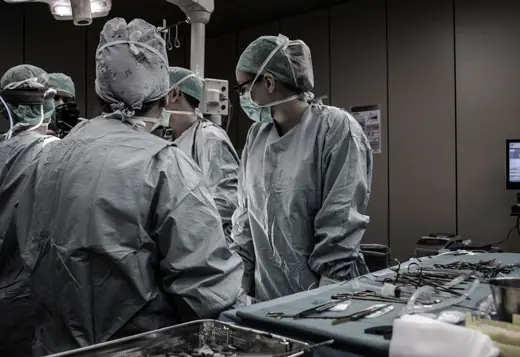
Heart scarring is influenced by a person's lifestyle. Heavy physical activity, stressful situations and bad habits can trigger the pathological process. Scars may remain after surgery. The causes of the disorders are quite varied - the heart muscle is an organ that ensures the full functioning of all systems.
A person with a similar pathology experiences rapid heartbeat, shortness of breath, frequent bouts of fatigue, and surges in blood pressure. The main symptom of cardiosclerosis is dull pain in the chest, especially after physical activity.
Treatment methods
Scars on the heart are detected during an electrocardiogram. To clarify the diagnosis, the patient is prescribed ultrasound, MRI and ECHO CG. The scarring process is irreversible and cannot be completely cured. Connective tissue cannot be absorbed or transformed back into muscle tissue. Treatment of this problem comes down to eliminating symptoms and preventing its further development.
Drug treatment
The use of medications is the main conservative way to treat cardiosclerosis. The selection of necessary medications is carried out on an individual basis, depending on the root cause of the condition.
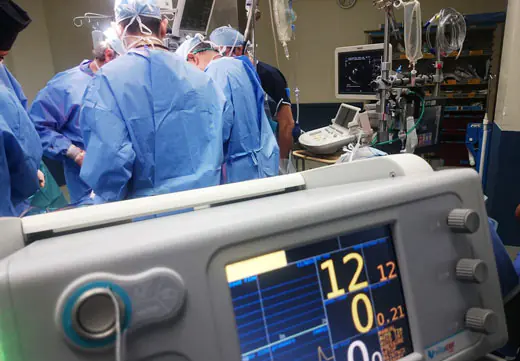
The main focus of drug therapy is to normalize the rhythm and restore a full metabolic process.
The main prescribed drugs for cardiosclerosis are:
- ACE inhibitors - help remove acute manifestations of the disease, reducing the load on the organ. Stabilize blood pressure. Representatives – Captopril, Lisinopril.
- Beta blockers - normalize the heart rate, compensate for oxygen deprivation, and prevent the likelihood of complications. Representatives - Bisoprolol, Carvedilol.
- Diuretics are diuretics. Prescribed to remove swelling. Drugs – Furosemide, Bumetanide.
- Altersterone antagonists are blockers of a hormone involved in the regulation of blood pressure and organ function. In pharmacies - the drug Spironolactone.
- Cardiac glycosides - increase the ability to contract, improving blood circulation. A common drug is Digoxin.
Surgical
Treatment of fibrosis (scar on the heart) with surgery involves removal of the aneurysm, bypass surgery of the coronary vessels and installation of a pacemaker - a pacemaker. Organ transplantation is considered a radical operation, which will completely eliminate the problem.
Folk remedies
Traditional medicine suggests using hawthorn tincture, caraway seeds, elecampane root decoction, and a mixture of egg whites and honey to treat scar growths. Traditional healers recommend causing the resorption of scars with decoctions and tinctures of currants and buckwheat flowers.
How does scar affect heart function?
Fibrosis is a dangerous condition that entails a variety of disorders and complications. At this moment, the organ itself and most body systems suffer.

A dangerous phenomenon is damage to the left ventricle. This is due to the functionality of the site and its significance. Blood passes through the left ventricle from the right atrium to the aorta. For the heart to function properly, it is necessary that the strength of the blood flow is not disturbed, as is the volume of the ventricle. As a result of its damage, there is a high probability of developing aortic stenosis, valvular insufficiency, hypoxia of the brain and other organs.
Injury to the interventricular space is considered relatively safe. This opinion is justified provided the rhythm and strength of contractions are complete. The doctor receives such information based on the ECG results.
If we consider the general effect of cardiosclerosis on the human heart, we can highlight the following consequences:
- deterioration of blood flow;
- unevenly distributed load on the organ;
- degeneration of individual areas;
- oxygen starvation of tissues;
- heart rhythm disturbances;
- development of deficiency;
- the appearance of aneurysms.
The functioning of the entire body is disrupted, and a person’s well-being deteriorates. Timely treatment will help prevent dangerous consequences and preserve the functionality of a vital organ.
How to avoid formation after a heart attack
A scar on the heart after a heart attack is a fairly common occurrence - as a result of the incident, a dead area is formed. Subsequently, connective tissue grows in this area. The best prevention of myocardial scarring after a heart attack is timely diagnosis and medical care. Only under the supervision of doctors can a patient receive complete treatment.
A heart attack is a dangerous phenomenon, which in most cases leads to the cessation of organ function. Consequently, without qualified intervention it is almost impossible to maintain working capacity and prevent the development of cardiosclerosis.
A patient who has suffered a serious condition will be prescribed a course of taking the necessary medications or surgery.
Scarring on the heart can lead to life-threatening consequences. If you experience symptoms of discomfort in the chest area, you should seek help as soon as possible. This will preserve human health and life.
When a person develops a myocardial infarction, blood flow in one or more coronary vessels is disrupted. This leads to an imbalance between the need of myocardiocytes for oxygen and its supply. Changes in metabolism due to lack of nutrients aggravate the condition of the affected tissue. As a result, cardiac muscle cells begin to necrotize and die. In place of the dead tissue, a scar forms. In this article I want to talk about the mechanism and possible consequences of such a “replacement”.
Development mechanism
At the time of development of an acute infarction, a sharp disruption of the blood supply to the myocardium occurs for the following reasons:
- Rupture of an atherosclerotic plaque under the influence of a sharp jump in pressure, increased heart rate and acceleration, and accelerated blood flow through the coronary vessels.
- Blockage of blood vessels due to blood thickening (acceleration of platelet aggregation, activation of the coagulation system, decreased rate of blood clot lysis).
- Spasm of the coronary artery (vasoconstriction).
I often observed patients in whom several factors were identified as the cause of the disease with myocardial damage. In young patients, vasospasm is often the basis of pathological disorders, which is not possible to determine after the start of treatment.
Expert advice
I strongly recommend starting treatment in a hospital immediately after an acute attack, since only in this case is it possible to limit the further spread of necrosis and minimize irreversible changes in the myocardium.
The study of histological samples confirms the destruction of the cardiac myocyte 20 minutes after the development of ischemia. After 2-3 hours of lack of oxygen, their glycogen reserves are depleted, which marks their irreversible death. Replacement of myocarditis with granulation tissue occurs within 1-2 months.
As my practice and the observations of colleagues show, the scar on the heart is finally consolidated after six months from the moment the first symptoms of acute infarction appear and is a section of coarse collagen fibers.
Classification
Heart scars can be classified according to their location and extent of distribution.
They can be located along the coronary vessels:
- Impairment of blood flow in the anterior interventricular artery leads to ischemia with the subsequent appearance of a scar in the area of the septum between the ventricles, involving the papillae and lateral wall, as well as on the anterior surface and apex of the left ventricle.
- The infero-posterior and lateral part is affected when the left circumflex coronary artery is blocked.
- Problems with the blood supply to the myocardium in the right artery results in irreversible changes in the right ventricle and can affect the posterior inferior part of the left ventricle and the septum. But such a violation is extremely rare.
According to the type of distribution, scars can be local (focal), which can be compared to a scar on the body, or diffuse (multiple). Experts call the second option dystrophic changes in the myocardium.
How does a scar manifest itself?
The acute period of a heart attack is characterized by a variety of clinical manifestations. The main symptom is pain, which can be relieved exclusively with narcotic analgesics and can last from an hour to 2-3 days. Then the pain syndrome disappears and the formation of an area of necrosis begins, which takes another 2-3 days. Then comes a period of replacing the affected area with loose connective tissue fibers.
If the correct treatment tactics are used, the following symptoms are noted:
- development of compensatory hypertrophy;
- rhythm disturbance (which often accompanies the acute period) is eliminated;
- tolerance to stress gradually increases.
If a scar that appears on the heart crosses the conduction paths along which the impulse travels, a conduction disorder is recorded, such as a complete or partial blockade.
In the case of successful recovery after a primary small-focal infarction, I did not notice any significant disturbances associated with the functioning of the heart in my patients.
If patients have formed a large scar or many small ones, the following deviations are observed:
- dyspnea;
- increased heart rate;
- the appearance of edema;
- enlargement of the left chambers of the heart;
- pressure fluctuations.
How dangerous is this?
The most dangerous is the development of a scar as a result of large-focal or transmural infarctions, as well as several repeated violations in different basins of the coronary vessels with diffuse multiple lesions.
In the case of a large area of damage or widespread cardiosclerosis, the remaining healthy cells cannot fully compensate for the work of damaged cardiomyocytes. The frequency and strength of contractions increases in order to provide organs and tissues with oxygen and necessary substances.
As a result, tachycardia develops; with its appearance, the load on the heart becomes even greater, which leads to dilatation of the left ventricle and atrium. As it progresses, blood stagnation appears in the right side with the development of heart failure.
I also observed another type of complication: a scar on the heart after a heart attack with extensive and deep damage to all layers of the organ caused the formation of an aneurysm due to the thinning of its wall.
The reasons for the appearance of such a defect are:
- transmural lesion;
- increased blood pressure;
- increased blood pressure inside the ventricle;
- excessive physical activity of the patient, refusal to comply with the regimen.
An aneurysm leads to the rapid development of heart failure, the formation of a parietal thrombus, and pronounced stagnation in the systemic circulation. Often complicated by severe rhythm disturbances leading to death (paroxysmal tachycardia and ventricular fibrillation).
Diagnostics
In order to establish a diagnosis, I conduct a survey and study the medical history (mainly, it includes ischemic heart disease with a history of heart attack). External examination usually reveals increased respiratory rate, weakening of heart sounds during auscultation, the presence of edema, and various rhythm disturbances. I will definitely take a blood pressure measurement.
Then I send you to the following research:
- general and biochemical blood test, coagulogram (will help establish concomitant diseases, cholesterol levels and clotting time);
- EchoCG or ultrasound of the heart helps to establish the presence of localized or diffuse areas of connective tissue, allows you to clarify the location and extent of distribution;
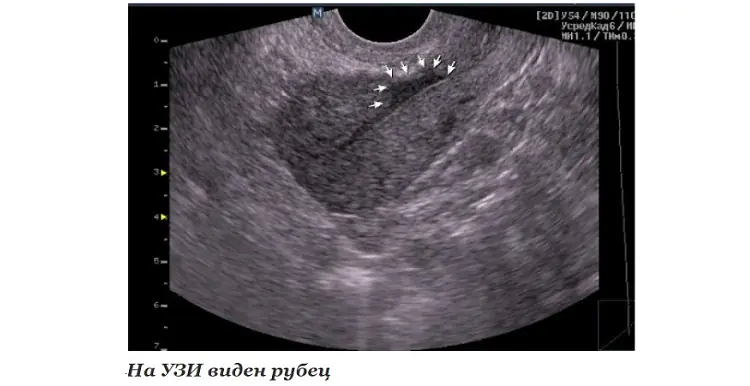
- MRI helps to visualize and reliably assess the affected area;
- scintigraphy is required to determine dysfunctional areas of the myocardium.
With the help of an ECG after a transmural and large-focal infarction, it is possible to clarify where the scar is located on the diseased heart.
It is determined by the presence of a Q wave in different leads, as can be seen in the table.
Localization of post-infarction scar in the left ventricle



